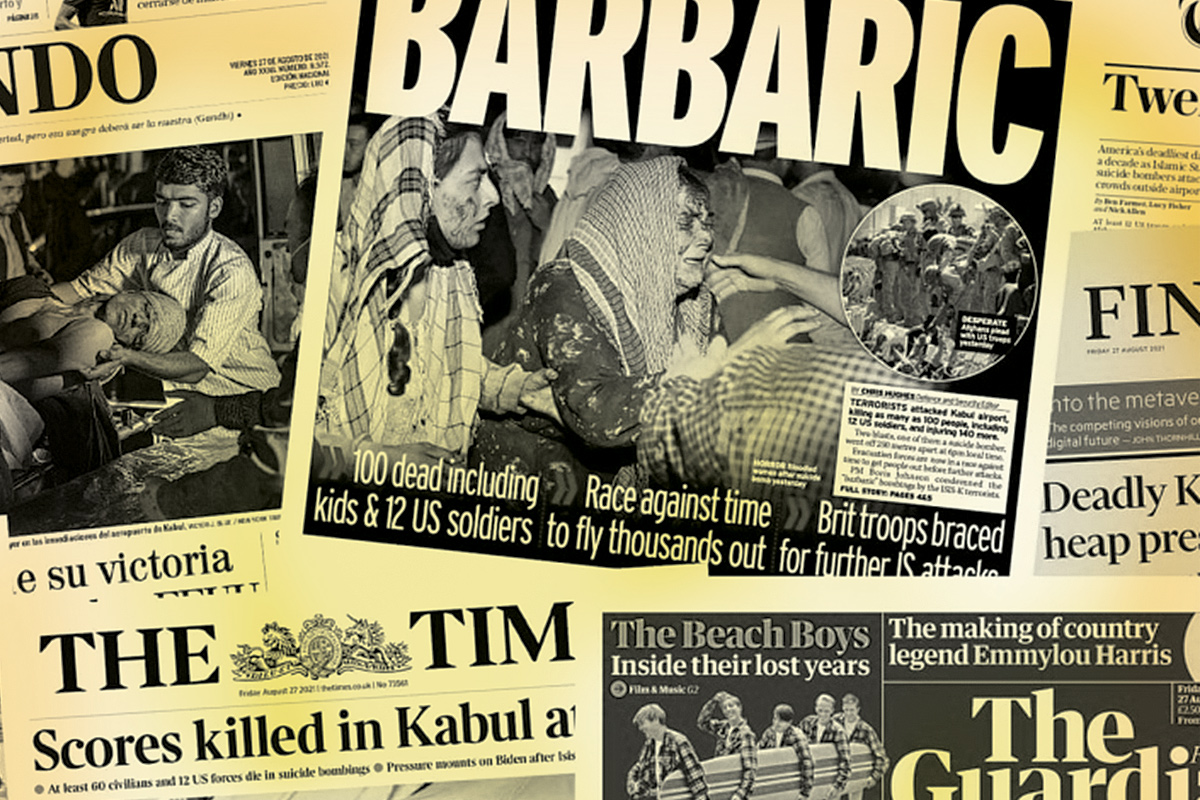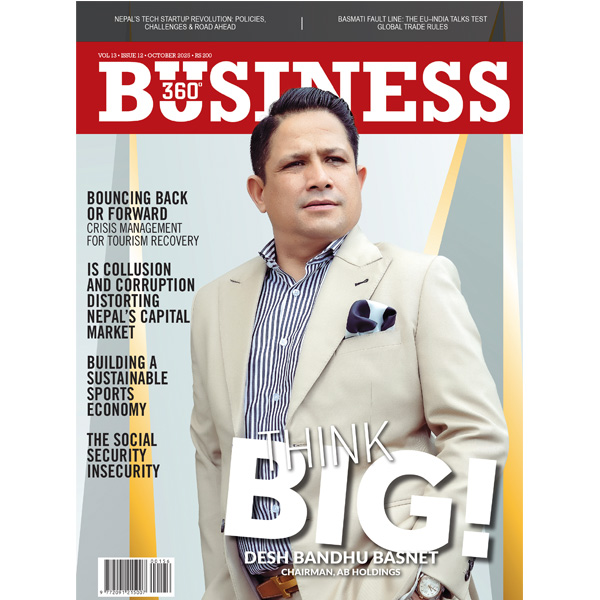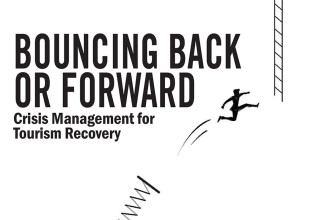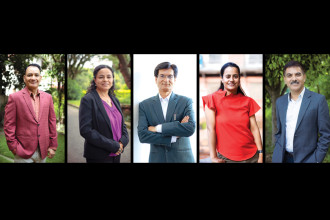
Twenty years of fighting between NATO led forces and Taliban reached a turning point with the overthrow of Ashraff Ghani’s regime by the Talibani forces on August 15. The edifice built on the support of Western allied power led by America over the last two decades making inroads to free and fair elections, peaceful transfer of power, equal rights for men and women, educating women and disadvantaged groups, freedom of speech and upholding the ethos of universal human rights are now in jeopardy with the usurpation of power by rebellion forces. Taliban is considered as the force sponsoring terrorism in the name of Islamic fundamentalism and connected with attack on twin towers of New York and Pentagon in Washington DC back in September 11, 2001. A number of terrorist networks like Haqaani group, ISIS-K and Al-Qaeda are considered sister organisations of Taliban. They have been using rocket launchers, assault rifles, bombing and suicide bombing in their fight with the Afghani establishment; and with the departure of US and allied forces over the last six months Taliban has taken over the country.
Amidst the infighting between government forces and rebellion groups, Afghanistan was gradually gaining traction to engage with regional and international communities in the area of economy, trade and development cooperation. Return of substantial number of wealthy expats, modernisation of agriculture sector and increased international financial and technical assistance was helpful in bringing the economy back on track. The portent of societal transformation was imminent; women in the country were given right to education and other social and economic rights at par with men as a result of government policy backed by Western influence and INGOs. A huge investment had gone into rebuilding Afghanistan after the scars left by three-decade-long armed struggle and conflict ending in the last century. The government of USA has alone invested around 86 billion dollars in rebuilding Afghanistan.
The geopolitical interest of the regional and external forces has driven Afghanistan into a battleground which was fuelled by persistent fighting among ethnic communities, warlords and Islamic groups. The country principally is a member of non-aligned movement but in practice, has become a playground of foreign forces since the dethroning of King Jahir Shah in 1973. Afghanistan is also a member of Economic Cooperation Organisation (ECO) that includes 10 member countries from West and South Asia, Caucasus and Central Asia, namely Azerbaijan, Kazakhstan, Uzbekistan, Tajikistan, Turkmenistan, Kyrgyzstan, Turkey, Iran and Pakistan. Similarly, it is also a member of South Asian Association for Regional Cooperation (SAARC) and observer in the Shanghai Cooperation Organisation (SCO). By virtue of its geographical location, Afghanistan has remained as a link between Central and South Asia.
As a result of long drawn armed conflict, persistent attacks of terrorist groups on people and vital installations of the country, the economy is shattered and level of economic development is lowest among its neighbours in South and Central Asia. A peaceful Afghanistan, which seems illusionary today, could harness the bounty of its close neighbours and become a prosperous country by optimally utilising its mineral resources. But these opportunities seem lost amidst the recent takeover of the country by Taliban forces.
Afghanistan is one of the least developed countries of South Asia with per capita income of approximately $500 in nominal terms; around 55% of the population is under extreme poverty (with income less than $1.90 per day), unemployment rate is 24% and at low rung in terms of human development index and ease of doing business. The level of foreign direct investment and portfolio investment is second lowest in South Asia while external trade is mostly confined to the neighbouring countries like Iran, Pakistan, India, United Arab Emirates and China. Among overseas countries, USA is the major source country for import. The total export of the country in 2020 was $776 million while the import of goods was $6.54 billion.
 Nepal as a member country of SAARC with similar geographical difficulties like Afghanistan is virtually disconnected from the latter in terms of bilateral trade and investment. The trade statistics published by the Department of Customs shows that export to and import from Afghanistan in 2019-20 were merely Rs 1.7 million and Rs 0.2 million, respectively. This shows that trade between the two countries has no commercial value and just reflects the small consignments that are accompanied with travelling passengers. In essence, Afghanistan transacts trade only with Pakistan and India among the South Asian nations.
There is a huge gap between export and import figures, particularly in Afghani trade with the rest of South Asian countries. Exports from Afghanistan which is mainly comprised of fruits and nuts, woolen rugs, hide, gemstones and medicinal herbs, are mostly exported to neighbouring countries while imported goods like equipment and machinery, foods, textiles, petroleum products and electronic items are mostly imported from the global markets both from outside and inside the region.
Nepal as a member country of SAARC with similar geographical difficulties like Afghanistan is virtually disconnected from the latter in terms of bilateral trade and investment. The trade statistics published by the Department of Customs shows that export to and import from Afghanistan in 2019-20 were merely Rs 1.7 million and Rs 0.2 million, respectively. This shows that trade between the two countries has no commercial value and just reflects the small consignments that are accompanied with travelling passengers. In essence, Afghanistan transacts trade only with Pakistan and India among the South Asian nations.
There is a huge gap between export and import figures, particularly in Afghani trade with the rest of South Asian countries. Exports from Afghanistan which is mainly comprised of fruits and nuts, woolen rugs, hide, gemstones and medicinal herbs, are mostly exported to neighbouring countries while imported goods like equipment and machinery, foods, textiles, petroleum products and electronic items are mostly imported from the global markets both from outside and inside the region.
 Nepal as a member country of SAARC with similar geographical difficulties like Afghanistan is virtually disconnected from the latter in terms of bilateral trade and investment. The trade statistics published by the Department of Customs shows that export to and import from Afghanistan in 2019-20 were merely Rs 1.7 million and Rs 0.2 million, respectively. This shows that trade between the two countries has no commercial value and just reflects the small consignments that are accompanied with travelling passengers. In essence, Afghanistan transacts trade only with Pakistan and India among the South Asian nations.
There is a huge gap between export and import figures, particularly in Afghani trade with the rest of South Asian countries. Exports from Afghanistan which is mainly comprised of fruits and nuts, woolen rugs, hide, gemstones and medicinal herbs, are mostly exported to neighbouring countries while imported goods like equipment and machinery, foods, textiles, petroleum products and electronic items are mostly imported from the global markets both from outside and inside the region.
Nepal as a member country of SAARC with similar geographical difficulties like Afghanistan is virtually disconnected from the latter in terms of bilateral trade and investment. The trade statistics published by the Department of Customs shows that export to and import from Afghanistan in 2019-20 were merely Rs 1.7 million and Rs 0.2 million, respectively. This shows that trade between the two countries has no commercial value and just reflects the small consignments that are accompanied with travelling passengers. In essence, Afghanistan transacts trade only with Pakistan and India among the South Asian nations.
There is a huge gap between export and import figures, particularly in Afghani trade with the rest of South Asian countries. Exports from Afghanistan which is mainly comprised of fruits and nuts, woolen rugs, hide, gemstones and medicinal herbs, are mostly exported to neighbouring countries while imported goods like equipment and machinery, foods, textiles, petroleum products and electronic items are mostly imported from the global markets both from outside and inside the region.
SAARC as a silent spectator
Afghanistan is undergoing an unprecedented humanitarian crisis as terrorist activities are raising their ugly head in the aftermath of Taliban takeover of the country. The heinous act of bombing and killing innocent people trying to escape the country at Kabul airport is a shame on humanity. Afghanistan seems to be in complete disarray due to infighting and has turned into a killing field. Women and children have also not been spared from this act of cold blooded murder. Houses are deserted and people are desperately looking for food and safe shelter. Many officials and people connected with Ghani’s government are fleeing or desperately waiting to leave the country for fear of reprisal by the incoming government. The two big economies - India and Pakistan - are considered as economic and strategic partners of Afghanistan in South Asia. With the entry of NATO-led forces and Western allies in 2001, India also came forward as investor and development partner of Afghanistan. This has gradually eroded the engagement of Pakistan in Afghani affairs; rather the Pakistani establishment and the ISI covertly supported Talibani activities by providing shelter to the fighting groups in the north-west frontier of Pakistan. At the same time Pakistan is also providing asylum to more than 1.5 million Afghani people who fled their country to evade potential attacks of Taliban. On the other side, India was on the spree of increasing investment and trade with Afghanistan over the last two decades. Gains achieved till mid-2021 in the front of socio-economic development is going into jeopardy leading to an uncertain future of this country. The whole process of SAARC is under hibernation over the last seven years due to strategic rivalry between India and Pakistan. Rather, sub-regional and bilateral cooperation mechanisms are burgeoning due to this long run stalemate of the regional inter-governmental body. After the 18th summit held in Kathmandu in 2014, the 19th summit was supposed to be held in Islamabad in 2016 but terrorist attacks on Kashmir sparked a spate of accusations between India and Pakistan, consequently leading the organisation into obscurity. Nepal as the chair of the group was supposed to hand over the lead to the next organiser of the summit but is compelled to take up this onerous responsibility without any action and reaction. In an embarrassing turn of events, no member country or the organisation itself has spoken about the tragic situation and the untold sufferings of the people in Afghanistan. SAARC as a regional organisation aimed at promoting socio-economic bond, fraternity and peaceful coexistence among member countries is bound to work towards poverty alleviation and promoting common welfare of the people of South Asia. This organisation should not remain aloof and callous to the agony inflicted upon Afghani people.Moving towards a black hole
The actions and words of Taliban after their takeover of the country are utterly incongruent. On one side, they have announced general amnesty to all officials including the military forces employed by Ghani government; assured right to education and employment for women with a caveat of observing the Islamic Hijab rules, respect basic human rights and expressed will for maintaining friendly relationship with neighbouring and other countries. But, their assurances seem to be failing in the context of indiscriminate killing of some officials of the previous regime and unchecked horrendous bomb attack by ISIS-K in Kabul airport killing more than 150 people. Many of those killed were those trying to flee the country in fear of being executed by the incoming regime. The mute question for Taliban after ascendance to power is whether they have the capacity and resources to govern the country? Whether in reality they will respect basic human rights and protect the rights of girls and women to get education and continue public jobs? Will they establish an inclusive government by mediating various political, religious and tribal groups? And importantly, what measures will they adopt to bridge the huge inequality gap that exists between rural and urban areas of the country? The allied military forces have now abandoned Afghanistan leaving its people at the mercy of the Taliban. It is still uncertain about how Afghanistan will be ruled in the days to come; what kind of relation the Taliban will cultivate with the rest of the world including their immediate neighbours. More importantly, what role will they play in the South Asian regional processes if the regional organisation starts functioning at all. All these questions can only be answered as the situation unfolds with the passage of time. Momentarily, we can only say that Afghanistan has entered into another dark tunnel with no sign of light at the other end. Read this also:
Published Date: September 27, 2021, 12:00 am
Post Comment
E-Magazine
RELATED Opinion





